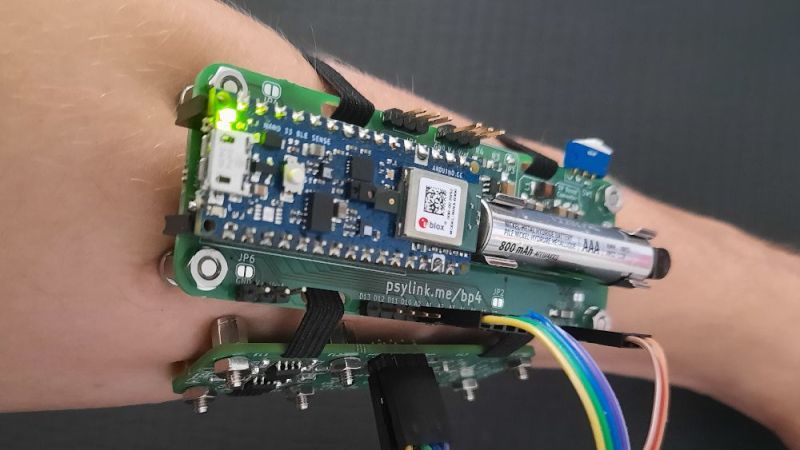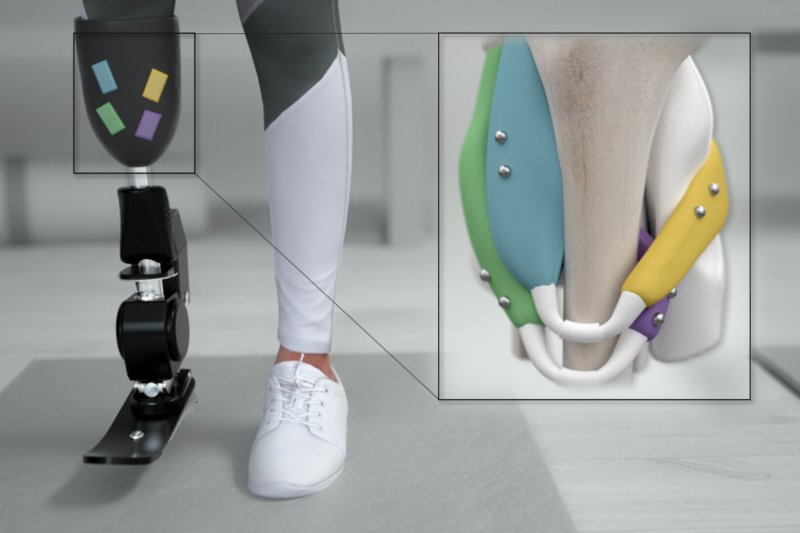Electromyography Hack Chat

Join us on Wednesday, January 19 at noon Pacific as we kick off the 2022 Hack Chat season with the Electromyography Hack Chat with hut! It’s one of the simplest …read more Continue reading Electromyography Hack Chat
Collaborate Disseminate

Join us on Wednesday, January 19 at noon Pacific as we kick off the 2022 Hack Chat season with the Electromyography Hack Chat with hut! It’s one of the simplest …read more Continue reading Electromyography Hack Chat

We don’t see many EMG (electromyography) projects, despite how cool the applications can be. This may be because of technical difficulties with seeing the tiny muscular electrical signals amongst the …read more Continue reading PsyLink An Open Source Neural Interface For Non-Invasive EMG

Today, prostheses and exoskeletons are controlled using electromyography. In other words, by recording the electrical activity in muscles as they contract. It’s neither intuitive nor human-like, and it really only …read more Continue reading Magnets Could Give Prosthetic Control a Leg Up
Ever felt like what your MCU of choice misses is a way to read the electrical signals from your muscles? In that case [Deepak Khatri] over at Upside Down Labs has got your back with the BioAmp EMG Pill. Described …read more
Continue reading Listening In On Muscles With The BioAmp EMG Pill
As amazing as prosthetic limbs have become, and as life-changing as they can be for the wearer, they’re still far from perfect. Prosthetic hands, for instance, often lack the precise control needed for fine tasks. That’s a problem for [Bertolt Meyer], an electronic musician with a passion for synthesizers with …read more
Continue reading Hacked Prosthesis Leads to Mind-Controlled Electronic Music
[John Miller] has the perfect response next time he complains about an ache or pain and one of his friends says, “You should listen to your body!” As you can see in the video below, he already does. Using two 9V batteries and some instrumentation amplifiers, [John] built an electromyography (EMG) rig.
If you haven’t heard of EMG, think of EEG or EKG, but for muscles instead of your brain or your heart. The LT1167 amplifier is well-suited for this application and even has a data sheet showing how to create an EMG circuit. [John] also used some more garden-variety …read more
Bodo Hoenen and his family had an incredible scare. His daughter, Lorelei, suddenly became ill and quickly went from a happy and healthy girl to one fighting just to breathe and unable to move her own body. The culprit was elevated brain and spinal pressure due to a condition called AFM. This is a rare polio-like condition which is very serious, often fatal. Fortunately, Lorelei is doing much better. But this health crisis resulted in nearly complete paralysis of her left upper arm.
Taking an active role in the health of your child is instinctual with parents. Bodo’s family worked …read more
![]() Continue reading This DIY Wearable Assist Goes Beyond Traditional Therapy
Continue reading This DIY Wearable Assist Goes Beyond Traditional Therapy
What with wearable tech, haptic feedback, implantable devices, and prosthetic limbs, the boundary between man and machine is getting harder and harder to discern. If you’re going to hack in this space, you’re going to need to know a little about electromyography, or the technique of sensing the electrical signals which make muscles fire. This handy tutorial on using an Arduino to capture EMG signals might be just the thing.
In an article written mainly as a tutorial to other physiatrists, [Dr. George Marzloff] covers some ground that will seem very basic to the seasoned hacker, but there are still …read more
![]() Continue reading EMG Tutorial Lets You Listen to Your Muscles
Continue reading EMG Tutorial Lets You Listen to Your Muscles
What with wearable tech, haptic feedback, implantable devices, and prosthetic limbs, the boundary between man and machine is getting harder and harder to discern. If you’re going to hack in this space, you’re going to need to know a little about electromyography, or the technique of sensing the electrical signals which make muscles fire. This handy tutorial on using an Arduino to capture EMG signals might be just the thing.
In an article written mainly as a tutorial to other physiatrists, [Dr. George Marzloff] covers some ground that will seem very basic to the seasoned hacker, but there are still …read more
![]() Continue reading EMG Tutorial Lets You Listen to Your Muscles
Continue reading EMG Tutorial Lets You Listen to Your Muscles
DIY medical science is fun stuff. One can ferret out many of the electrical signals that make the body run with surprisingly accessible components and simple builds. While the medical community predictably dwells on the healthcare uses of such information, the hacker is free to do whatever he or she wants.
A good first start is to look at the relatively strong electrical signals coming off of the heart and other muscles. [Bernd Porr] has put together a simple bioamplifier circuit, and his students have made a series of videos explaining its use that’s well worth your time if you …read more